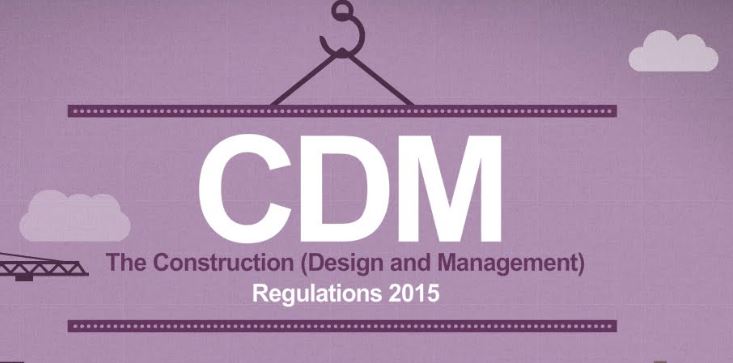
CDM 2015 – Principal Contractor
CDM 2015 defines the principal contractor as the contractor in overall charge of the construction phase. The principal contractor is normally a contractor so will also have contractor duties, however, there should only be one principal contractor for a project at any one time.
A principal contractor (and a Principal Designer) is required to be appointed by the client on any project involving more than one contractor.
Principal Contractor Responsibilities
As the Principal Contractor, you will have been appointed in writing when there is going to be more than one Contractor on site. The principal contractor must be capable of carrying out the role and have the right skills, knowledge, training and experience. This will depend upon the nature of the work and the range and nature of health and safety risks involved.
The principal contractor is responsible for managing health and safety on the construction site, and must plan, manage, monitor and coordinate the construction phase so that health and safety risks are controlled.
As Principal Contractor, you must ensure that you:
- Possess the right skills, knowledge, training and experience to carry out the work, dependant on the nature and scope of the project. It may also be necessary to hold a CITB qualification in site management, dependant on your experience, qualifications and knowledge.
- Control health and safety risks by ensuring you manage, monitor and coordinate health and safety in the construction phase of a project.
- Ensure the Client has submitted an F10 Notification if the project is notifiable to the HSE.
- Prepare the Construction Phase Plan (CPP) and ensure it is followed by all workers involved at each phase of the project. Update the CPP and monitor all health and safety issues on site to ensure the controls in place remain effective.
- Create suitable and sufficient risk assessments and method statements for the works, therefore providing health and safety measures to control the risks from all works.
- Ensure all your operatives/sub-contractors have the required skills, training, knowledge and valid health and safety certification to carry out the work involved. This should be evidenced and kept on file.
- Provide suitable welfare facilities.
- Provide suitable site inductions and site rules, including first aid and emergency arrangements and toolbox talks prior to work commencing on site.
- Ensure all plant, tools and equipment used are suitable for each stage of the works. Record evidence that plant has been assessed and checked safe for use.
- Equipment such as scaffolding, must be officially signed off by whomever erects it, and it will need to be inspected every 7 days and a record kept until the end of the project.
- Put in place a procedure for reporting near miss incidents, accidents or any unsafe working practices that may occur on site.
- Take reasonable steps to prevent unauthorised access to work sites and monitor this.
- Contribute to the Health & Safety File as requested by the Principal Designer.
Construction Safety and Compliance with the CDM Regulations 2015
Construction safety is a critical aspect of the construction industry. It involves the implementation of measures to ensure the safety and well-being of workers, visitors, and the general public at construction sites. The Health and Safety Executive (HSE) is responsible for regulating health and safety in the construction industry in the UK.
The HSE provides guidance on how to comply with health and safety law, including the Construction (Design and Management) Regulations 2015, which apply to all construction projects from concept to completion. The regulations cover various aspects of construction work, including working at height, excavations, lifting, electricity, fire, plant and vehicles, demolition, dust, cement, chemicals, asbestos, silica, noise, vibration, and manual handling.
MSP Business Services Ltd is an independent health and safety and CDM advisory service that assists companies in implementing a positive health and safety culture and fulfilling their duties placed on them by Health and Safety Legislation.
If you have any further questions or concerns about construction safety or would like more information on this topic please contact us.
How MSP can help you
Our CDM Consultant offers comprehensive customer focussed, individually tailored services and training, cover all aspects of the CDM Regulations 2015, ensuring peace of mind for YOU.
We offer:
- Construction Safety and related Advisory Service to Clients, Principal Designers, Principal Contractors and Contractors
- Assistance with the preparation of Principal Contractors’ Health & Safety Plans
- Assistance with the preparation of Contractors’ Health & Safety Plans
- Site Inspections and Safety Audits (pro active monitoring)
- Advice on contents of the Health & Safety File required at project completion
- Risk Assessment advice and support
- Health & Safety Policy preparation
- Assistance after HSE inspections resulting in Prohibition and Improvement Notices and F.F.I. (Fee for Intervention) investigations.
See our CDM information page for further information. CDM Advice – 2015 Regulations


